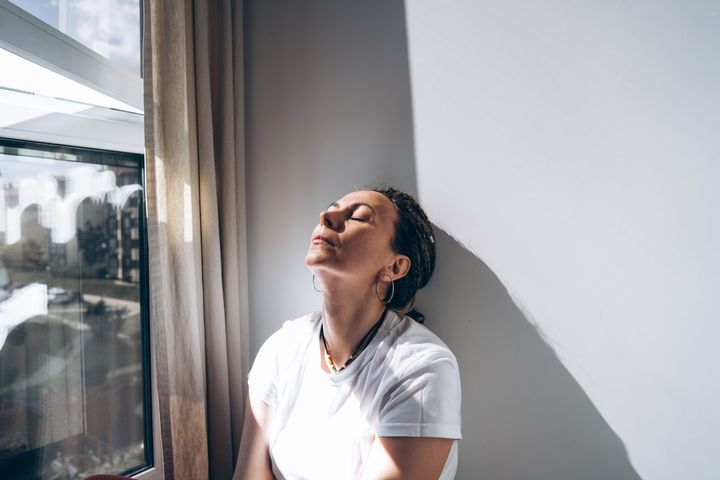
While we all know that life ebbs and flows, emotions come and go and bad times don’t last, when you’re in a moment that you’ve found yourself completely overwhelmed by the emotions that difficult emotions have brought you, it can be hard to get your mind back to that grounded, realistic place of thinking.
Especially if you’re already struggling with mental health problems as 1 in 4 people in the UK do.
According to life coach Morgan Starr-Riestis, the solution, at least as these emotions are taking over, is bilateral simulation.
What is bilateral simulation?
According to the Anxiety Release App, bilateral stimulation is stimuli (visual, auditory or tactile) which occur in a rhythmic left-right pattern. For example, visual bilateral stimulation could involve watching a hand or moving light alternating from left to right and back again. Auditory bilateral stimulation could involve listening to tones that alternate between the left and right sides of the head.
The effects of it are:
- A relaxation effect including decreased physiological arousal
- Increased attentional flexibility (meaning that your thoughts become less ‘stuck’ on whatever was bothering you)
- Distancing effect (meaning that the problem seems smaller and further away)
- Decreased worry
Bilateral simulation movements to help with difficult emotions
All of these movements will help to activate your parasympathetic nervous system which relaxes your body.
What to do when you feel angry
For this, Starr-Riestis recommends gorilla thumps which are exactly what they sound like. Lightly thump up and down your body, without inflicting actual pain on yourself to release the tension that anger creates.
Next, try alternating fists to the floor. This is done simply by standing still and punching downwards, again without hurting yourself. Pair these movements with your breath and eventually with alternating stomps.
Now, do a full body shakeout and take some deep breaths. Repeat the entire process if necessary!
What to do when you feel sad
For this emotion, you comfort yourself by doing ‘butterfly taps’. This involves crossing your wrists over the centre of your chest and alternating gentle taps on your chest using your hands. Next, give yourself ‘self hugs’ by crossing your arms over one another and alternating pressure to give a ‘hug’ sensation on each side. Continuing with this ‘self-hug’ sensation, fold your arms a little more loosely and sway from foot to foot to do a ‘bamboo sway’.
Finally, find a prop and use it to throw and catch between your hands, around your body, before resting it on your stomach and watch how it moves when you inhale and exhale.
Starr-Riestits also urges that if any of this makes you feel like you’re going to cry, just let those tears fall! Reducing the physical impacts of our emotions doesn’t mean ignoring them entirely.